#Guerrilla Filmmaking
Explore tagged Tumblr posts
Text

source
VHS booklet for John Waters' Mondo Trasho (1969)
#60s#1960s#cinema#cinephilia#trash#trash movie#john waters#guerrilla filmmaking#divine#queer cinema#mondo trasho#vhs#vhs booklet#booklet
3 notes
·
View notes
Text


THAT ONE TIME STING ALMOST BECAME KYLE REESE -- WELCOME TO 1984.
PIC INFO: Spotlight on American film actor Michael Biehn in full costume as human resistance fighter Kyle Rees, from the 1984 sci-fi/action "The Terminator," written & directed by James Cameron.
PIC #2: English musician Sting (decked out in his infamous codpiece) as Feyd-Rautha Harkonnen in David Lynch's "DUNE" (1984).
OVERVIEW: "The Austrian Oak wasn’t the only star who almost missed out on his iconic role. When casting Reese, the human protector who travels back from the future to thwart the Terminator, pop star Sting was considered for the part that would eventually go to Michael Biehn. “I even met with him,” says Cameron of the former Police frontman. “I was fascinated by his look. He seemed slightly otherworldly – or at least not of this time. I felt vindicated when Sting played a major role in David Lynch’s "Dune" (1984) as the malevolent Feyd-Rautha."
"However, he wasn’t interested. I was too much of an unknown as a director at the time. I remember riding down in the elevator with him after our meeting and him sneering "So, Piranha 2, huh?" I didn’t want to tell him I had gotten fired off that film after a few days of shooting, so it wasn’t my movie at all, because frankly I was better having even a bad credit than having no director credit. Or that’s what I thought at the time.""
-- BFI, "The Terminator came to me in a dream: a new interview with James Cameron," published April 21, 2021
Sources: https://milleniumcondor.tumblr.com/post/157358762391, www.bfi.org.uk/interviews/terminator-james-cameron, & Picuki.
#The Terminator#Tech-Noir#Sci-fi/Action#Los Angeles 2019 A.D.#Resistance fighter#Tech Noir#Costume Design#Feyd-Rautha#Feyd-Rautha Harkonnen#80s Cinema#Sting#Welcome to 1984#Future War#DUNE 1984#80s Sci-fi#80s Movies#Guerrilla filmmaking#Terminator#1984#DUNE#House Harkonnen#Sci-fi Movies#Sting Feyd-Rautha#Film Stills#Cinema#Movie Stills#The Terminator 1984#Terminator 1984#Terminator Future War#Science fiction
9 notes
·
View notes
Text
1 note
·
View note
Text
Watched Emilia Pérez to see what all the fuss was about. I might drop an essay at some point, or maybe I will write it before angrily deleting it and trying not to think about this crap ever again, but just know that I am absolutely LIVID.
The people praising this are so hypocritical I hope that when this pompous piece of SHIT of a director decides to make a film "exploring usamerican society" where a school shooter transitions and becomes an anti-school-shooting advocate that helps locate the bodies of missing school shooting victims with the help of other school shooters and they die and become a national hero, and also all the actors are like Russian or some shit and don't even know how to speak English for more than two sentences and also the director refuses to record in the US because "it didn't fit his image of the country" despite it literally being the same fucking country he's "inspired" by, y'all praise him once again for his bold narrative and unashamedly "real" representation. Fuck you
#FUCK jacques audiard FUCK snotty filmmakers that circlejerk around 'feel-good third world stories' by first world pieces of shit#Fuck usamerican views on culture and identity being forced onto Latin Americans and being used as an excuse#To cast people who have no fucking idea of what being a Latin American is actually like just because their grand grandparents were Mexican#and most of all FUCK the people who voted for this piece of absolute horseshit and are lauding it as genius storytelling. You know NOTHING#Luke rants#i am okay. i am so normal#im not even mexican i can nit IMAGINE how they feel about this holy shit#though i suppose the reason why this absolute turd of a 'film' hits close enough#because my family too has suffered guerrilla / narco violence and disappearances and deaths#And this thing wants you to feel sooooooo much for the poor poor narcos in jail who are so sorry and apologetic you guys :(#you mexicans dont understand everything would be fixed if you let understanding in your heart and worked together with your tormentors#So of course i a french moron that did a grand total of zero research on your country have to spell it out for you#Peace and love on planet earth
13 notes
·
View notes
Text
Aparently nirvanna the band the show the movie (yes, that is the name, that is the full name) has finally premiered at a festival. Which means its not long until it actually comes out
Holy fucking shit in my pants my pumpkins.
And apparently its really good.

this is the big one
#The premise sounds fucking insane#How they managed to film it using their typical guerrilla style filmmaking i have no idea#Im going to go fucking mental over this one when i get my hands on it boyos#You havd no idea#Nirvanna the band the show
7 notes
·
View notes
Text

A Rembrandt in Times Square. 🖼️
#rembrandt#johannes vermeer#jan vermeer#Vermeer#edouard manet#Manet#art heist baby#art heist#fbi#nyc#nyclife#times square#Chelsea#art gallery#dead master#guerrilla marketing#social media marketing#marketing#stunts#actors life#isabella stewart gardner museum#Gardner museum#Gardner art heist#art for sale#boston massachusetts#Boston#urban photography#publicity#gotham#filmmaking
11 notes
·
View notes
Text
We have one day left to meet our goal of getting 1,000 views for Getting Hit On (the short film I wrote and produced) before August 1st, and I’ve begun doing some guerrilla marketing on Instagram.




(I couldn’t keep the links when I saved the stories, so you can get Rickrolled here:)
youtube
#getting hit on#getting hit on short#getting hit on short film#cotton candy flavor#cotton candy flavor media#marketing#advertising#guerrilla marketing#guerrilla advertising#trickery#tomfoolery#flimflams#bamboozlement#bamboozled#instagram#instagram story#instagram stories#instagram ads#social media#social media advertising#film#short film#indie film#indie filmmaker#independent filmmaking#indie filmmaking#filmmaker#filmmaking#Youtube
2 notes
·
View notes
Text
Film project for 1st year film class
Inspiration: Horizon zero dawn
Edited in Premiere Pro
Cosplay made by me
Actor: my friend
(Music rights belong to Guerilla games)
(Made at 16 y/o)
#short film#hzd#horizon zero dawn#guerrilla games#art school#filmmakers on tumblr#filmmaking#artists on tumblr#premiere pro#cosplay#hzd aloy#cosplayers on tumblr
2 notes
·
View notes
Text
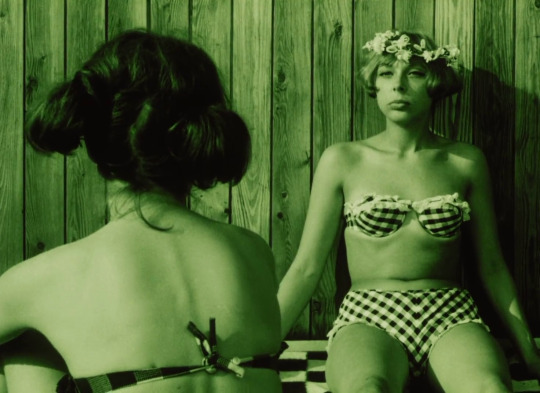

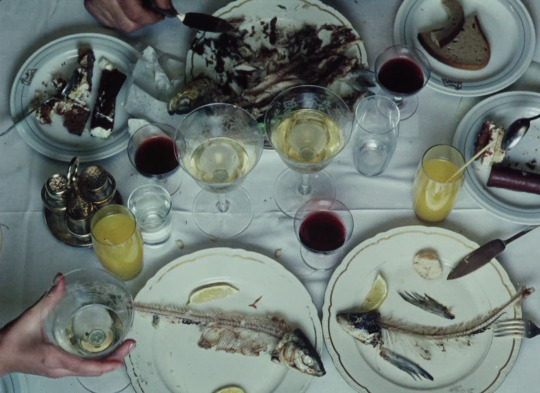


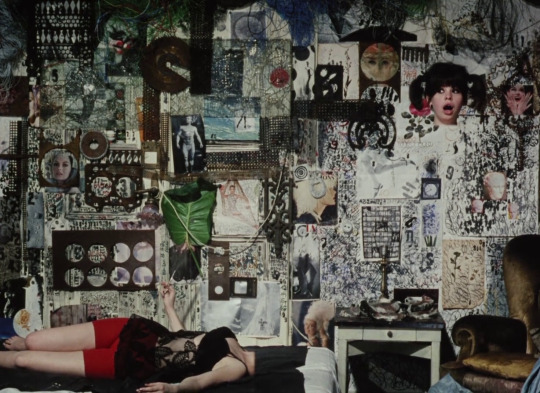
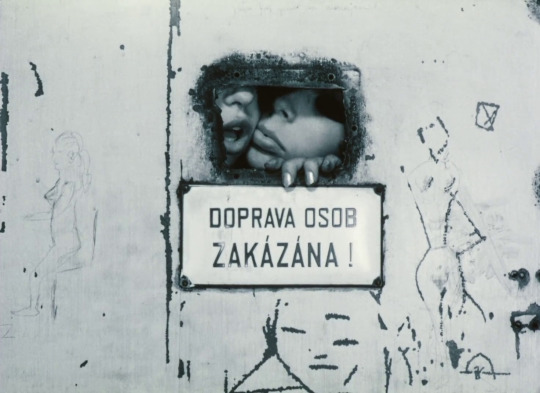

Daisies (1966)
"When the Czech director Věra Chytilová made Daisies, her second feature, Czechoslovakia had endured nearly two decades of repressive Communist rule, and she was one of the leading voices in a new generation of filmmakers who expressed resistance through gestures of allegorical insubordination that were semantically slippery enough to possibly get by the censors. Similarly, the Maries operate like guerrilla insurgents across Prague, disguising their true intentions and refusing to dutifully submit their bodies for either labor or male gratification."
#daisies#daisies 1966#věra chytilová#jitka cerhová#ivana karbanová#1960s#1966#filmedit#film#cinema#movies
477 notes
·
View notes
Text
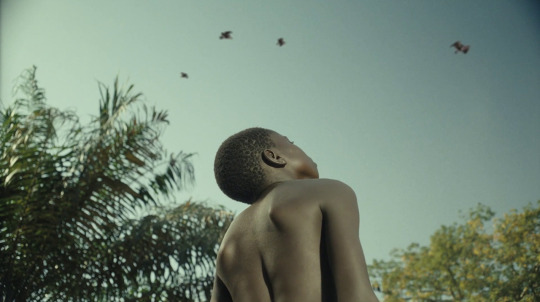
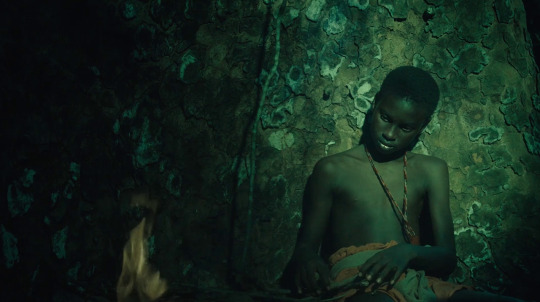
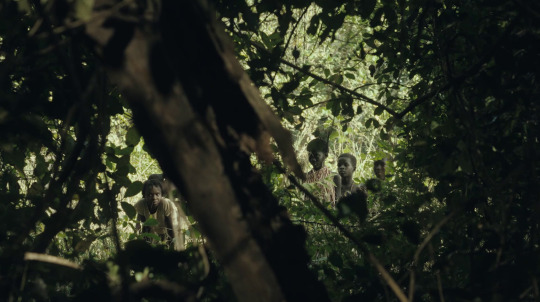
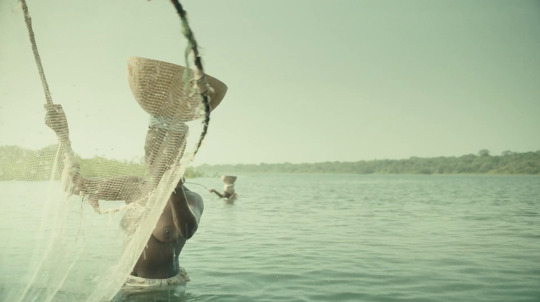

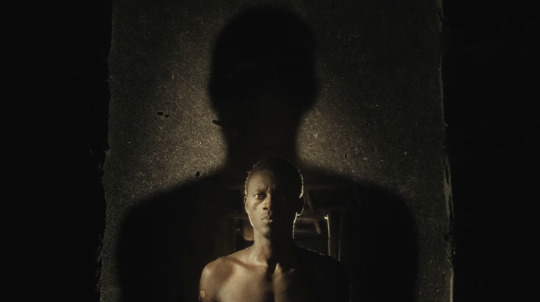
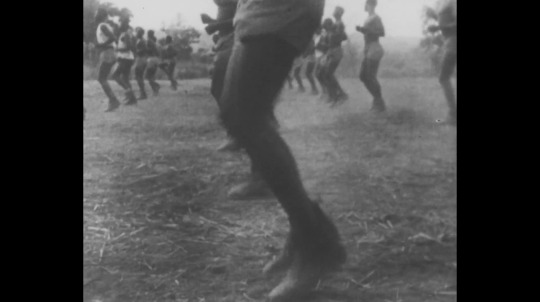

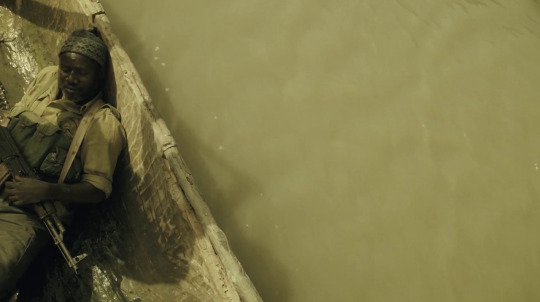


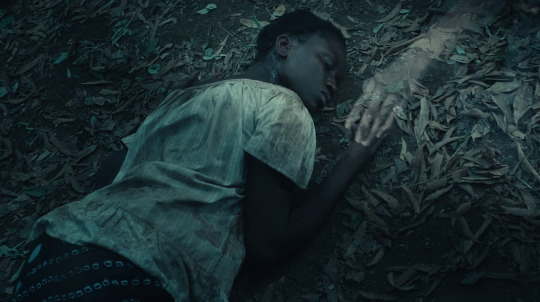



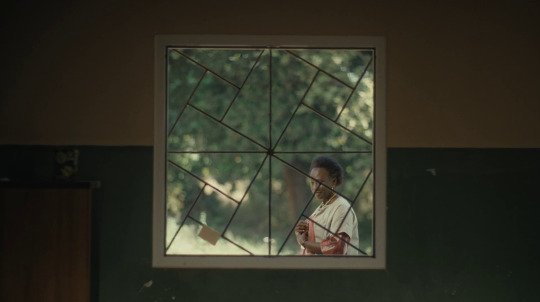

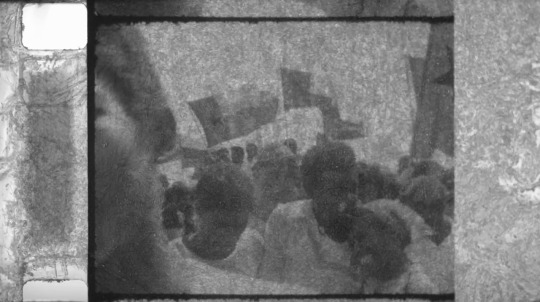
Nome (2023, Guinea-Bissau 🇬🇼) directed by Sana Na N'Hada
Nome is a film over 50 years in the making. In the late 60s, revolutionary Bissau-Guinean Marxist leader Amílcar Cabral sent filmmakers Sana na N’Hada, Flora Gomes, Josefina Lopes Crato and José Bolama to Cuba. To help change international public opinion against the Portuguese colonial regime, they returned to the country to document the struggle. This archive footage forms the basis for the fiction Nome, N’hada following its eponymous character as he joins the resistance movement. The story takes place in Guinea-Bissau in 1969, during the war of independence between the Portuguese colonial army and the guerrillas of the African Party for the Independence of Guinea. The protagonist, Nome, leaves his village and joins the ranks of the guerrillas. After years of struggle, he returns to his village as a hero. However, the initial joy soon gives way to bitterness and cynicism. (source)
#nome 2023#sana na n'hada#sana na nhada#guinea bissau#world cinema#cinema#screencaps#dailyworldcinema
585 notes
·
View notes
Text


122/366 days of joey potter 5x14- guerrilla filmmaking
#joey potter#joeypotteredit#dawson's creek#dawsonscreekedit#teendramaedit#*#366*#by kate#season 5#oh this princess...
53 notes
·
View notes
Text
In light of the good news, I've finally sat down to watch skibidi toilet. It's pretty good, not too surprisingly! Absolutely no wonder that Michael Bay seems to have such a genuine fondness for it, considering how much of a love-letter it is to his work on Transformers and how dedicated it is to just producing spectacle above all else.
The first-person-POV of the cameramen in the show is easily its most inspired element, giving an intuitive structure to the episodes (about 50% of the time the episode ends because the cameraman gets fucking bodied). As it escalates in scope and ambitions, you see the device being used in more impressively inventive ways towards narrative ends, as cameramen and TV men are used to diegetically transition between subplots. But it's also used in more subtle ways, with different effects or overlays, or simply in how the cinematography itself can communicate the emotions of the cameraman doing the recording.
Moreover, the whole thing is very video-game-y, isn't it? Not even just in terms of the assets, but in terms of the action, the beat-to-beat plotting. It's a lot of sneaking around open-level environments, picking up new weapons from dead enemies, encountering new types of enemies or bosses with their own attack patterns and weaknesses. It instantly transported me back to being a teenager, fucking around in Garry's Mod, playing Team Fortress 2 with my mates, getting through Half Life, and all that. The SFM-filmmaker aesthetic isn't just a mode of convenience—although obviously the fact that DaFuq!?Boom! has managed to maintain a pretty prodigal output can be partly attributed to the fact he's using software and assets he's clearly very comfortable with—but rather, it informs everything about the storytelling.
People love to performatively (or ignorantly) act like skibidi toilet is some incomprehensible, unprecedented "brainrot" that the kids are into, but it's nowhere near as absurd as everyone likes to pretend. I feel like I've seen something very similar to it before, but the closest thing that comes to mind is the old trend of stick-figure fight animation borne out of Newgrounds. Or if not that, then yeah, the Transformers films! It's like the entire back half of Dark of the Moon depicting this huge guerrilla war in occupied Chicago—that's clearly the main touchstone.
It's a crime that the most absurd (and often disturbing) part of the show, the SKIBIDI DOB DOB DOB YES YES earworm constantly being repeated by the skibidi toilets, has seemingly been copyright struck, resulting in many portions of the official uploads suddenly just going silent for multiple seconds. It actually incenses me that someone, or some organisation, has been able to do this. I don't really have an ethically-consistent model of how copyright should work, but in cases like this, it seems like obviously a net negative for the world. For whatever reason, the Shorts versions of the episodes seem unaffected, but they're unideal for their own reasons.
The main thing is that past a certain point, the Shorts clearly become cut-down extracts of the main widescreen episodes, which presumably have the intended aspect ratio. Some of the longer uploads have what the content-slop lore freaks describe as "secret scenes", added-in, revised, or unabridged, often containing more of the long-term plot points. The idea that these might be "secret" from the perspective of anyone just watching the Shorts is really funny to me. Also, the fact that the episodes are being collected into "Season" compilations is hilarious to me in its own right—in what attention-deficient world can 20 minutes of a show be described as a full season? Gen Alpha is so cooked bro.
Thankfully, I was able to find a Google Drive where somebody's managed to archive the full series so far with uncensored audio. But then I was checking the YouTube uploads, and I realised some of the newer ones actually have closed captions for certain lines of dialogue! As in, the reversed speech of the cameramen etc, or even what some of the skibidi toilets are saying! These subtitles are missing from that Google Drive archive, meaning it's not a perfect way of watching the show either.
But the thing is, I also think adding subtitles to the show is a huge misstep on DaFuq!?Boom!'s part. One of the things I found most surprising about skibidi toilet is that, for the most part, it actually requires the viewer to be paying pretty close attention in order to follow any of the "plot", insofar as there is one. You have to be able to tell apart all these near-identical and often silent appliance-head guys. Sometimes the POV will be some random cameraman, but other times it'll be a recurring character, and noticing that will add something to the viewing experience. Most of all, the lack of speech (and lack of expressions) for most of the characters forces you to constantly be interpreting their body language to understand what they're communicating to one another.
The subtitles stand to ruin this aspect of the show. Also, the dialogue itself is poorly-written, bro. It's nice that the writer does have something in mind for everything they're saying to one another, but it's a complete mistake to actually present that as part of the text. Frustratingly, I can't even commit to just watching future episodes without captions, because what if he decides to seriously start putting load-bearing plot stuff in them?
(According to DaFuq!?Boom!'s word of god, all the skibidi toilets can understand all languages, they just choose to speak their superior skibidi language. God I love that.)
The main completed arc of the story, set in and around a bunker, is honestly fantastic, thrilling stuff, with some individual (rudimentary) character arcs and tons of great setpieces. My favourite episode of the show, in the immediate aftermath, delivers a legitimately great twist in a brilliant way. I'm excited for the next episode to drop, but moreover, I'm on the absolute edge of my seat waiting to see how skibidi toilet transforms itself for the mainstream media of TV and/or film.
10 notes
·
View notes
Text
let it be (1970) is so crazy because michael lindsay-hogg acted like a cold war spy/guerrilla cinéma vérité filmmaker only to release a music video supercut that nevertheless induced extreme cultural despair about the death of the 60s. obsessed with him
9 notes
·
View notes
Text
so I ended up not auditioning for that lesbian cowgirl short student film, bc it would've been a 5 hour drive in the snow on a work night. and to "make up" for that I auditioned for this project that was like . [short student film. in the style of this one zombie movie] so I assumed it would be like, run and gun, guerrilla filmmaking, fun time short student film.
no. film 101 project explaining what storyboarding is. that this dude put out the casting call for on one of the bigger audition notice facebook pages
"I will not join any cast that would cast me as a member" - carl marks
3 notes
·
View notes
Text
The Blair Witch Project – Transmedia Storytelling
In 1999, a small indie horror film with a $60,000 budget pulled off one of the most legendary marketing campaigns ever (and grossed the film $248 million worldwide). There was no big-name actors, no CGI, and no traditional jump scares, yet it became one of the most profitable and culturally influential movies of all time. The Blair Witch Project wasn’t just a movie—it was a marketing phenomenon that blurred the lines between fiction and reality, using the internet and trans-media storytelling in ways never seen before.
The Blair Witch Project (1999) is a found-footage horror film that follows three student filmmakers—Heather, Josh, and Mike—who venture into the Black Hills Forest to investigate the legend of the Blair Witch. Armed with cameras, they document their journey, but as they become lost, eerie occurrences escalate, leading to paranoia and terror. The film’s raw, handheld style and minimalist storytelling create a sense of realism, blurring the line between fiction and reality. The film’s effectiveness comes from its realism and minimalism, using shaky, handheld camera work to create an authentic documentary feel. Unlike traditional horror films that rely on excessive gore or monsters, Blair Witch thrives on psychological terror, playing with the fear of the unknown. Adding to its unsettling nature, the actors were not given full scripts but only general story beats, forcing them to react naturally to disturbing situations. This improvisational approach made their fear feel genuine, culminating in a haunting final scene that left audiences disturbed and debating its meaning long after the credits rolled.
youtube
This trailer worked because it lacked big jump scares, special effects, or even a clear plot. This made it feel authentic, fueling curiosity and making audiences desperate to uncover the truth. More importantly, it blurred the lines of reality for audiences, people did not know whether the movie was staged or real.
Central to the film's marketing was the creation of an elaborate backstory surrounding the Blair Witch legend. This was achieved through various mediums: • Website: Launched in 1998, the official website featured faux police reports, interviews, and news articles detailing the disappearance of the three student filmmakers. This online presence played a crucial role in building suspense and curiosity, making it one of the earliest examples of viral marketing in cinema. IMDb even listed the actors as “missing”, reinforcing the illusion. This led to online speculation and debate—was this movie real or staged? By the time the film hit theaters, audiences were already invested. They weren’t just watching a horror movie; they were solving a mystery.

Picture of what the website looked like. • Mockumentaries: To further deepen the lore, the Sci-Fi Channel aired a 45-minute mockumentary titled "Curse of the Blair Witch" prior to the film's release. This program offered firsthand interviews with fictional colleagues and relatives of the missing filmmakers, enhancing the film's realism. • Missing Person Flyers: The filmmakers distributed flyers featuring the faces of the actors, treating them as genuine missing persons. This guerrilla marketing tactic sparked debates over the film's authenticity, drawing audiences eager to uncover the truth.

The film’s success teaches valuable lessons about storytelling and audience engagement. The Blair Witch Project thrived because it built an immersive world beyond the movie, engaging audiences in a way that felt real. It embraced mystery, allowing people to fill in the blanks with their own fears. And it was ahead of its time in understanding how the internet could turn a small indie film into a cultural event. And beyond its financial success, the film changed the way horror movies were marketed and inspired an entire subgenre. Its influence is seen in later films like Paranormal Activity, Cloverfield, and REC, all of which used found footage and viral marketing tactics to great success. In contrast, many modern movie marketing campaigns struggle because they overexpose films before their release, fail to engage audiences beyond traditional ads, or try too hard to force viral moments.
While The Blair Witch Project demonstrated how innovative marketing could turn a low-budget film into a blockbuster, Cats (2019) serves as a textbook example of how poor marketing choices can doom a film before it even hits theaters. The film, an adaptation of Andrew Lloyd Webber’s hit Broadway musical, was intended to be a major holiday releaseand a visual spectacle that blended musical theater with cutting-edge CGI. Instead, it became one of the most mocked films in recent history, losing an estimated $100 million at the box office and sparking widespread ridicule. Its failure wasn’t just about the film itself—it was about a marketing campaign that misread its audience, overhyped flawed technology, and failed to generate genuine excitement.
One of the film’s biggest marketing blunders was its first impression. The release of the initial trailer in July 2019 was met with immediate backlash, as audiences were horrified by the film’s bizarre CGI designs. Instead of opting for traditional costumes or animation, the filmmakers chose to digitally superimpose human faces and features onto cat-like bodies, creating an unsettling “uncanny valley” effect. This wasn’t the whimsical or magical world audiences expected—it was unintentionally creepy. The internet exploded with negative reactions, with many users comparing the characters to nightmare fuel rather than beloved musical icons. Instead of generating intrigue, the trailer became a meme, with social media flooded with jokes and parodies. Unlike The Blair Witch Project, which used mystery to its advantage, Cats revealed too much too soon—leaving audiences turned off rather than curious.
Here is the trailer to the movie:
youtube
The marketing campaign also failed to connect with the right audience. The Broadway version of Cats has a passionate but niche fanbase—one that appreciates theatricality, live performance, and surreal storytelling. However, Universal Studios promoted the movie as a big-budget blockbuster, aiming for a wide mainstream audience that had little connection to the stage production. Instead of marketing the film as a unique theatrical experience, they focused on star power, highlighting cast members like Taylor Swift, Idris Elba, and James Corden. While celebrity endorsements can sometimes elevate a film, they didn’t make sense in this case, as none of these stars had strong ties to the theater world. The marketing campaign felt confused—was this film meant for die-hard theatergoers, fans of pop stars, or general movie audiences? By failing to define a clear target audience, Cats ended up appealing to no one.
The result was a box office disaster. Cats opened to a dismal $6.5 million in its first weekend, failing to compete with Star Wars: The Rise of Skywalker and other holiday releases. It ended its theatrical run with just $75 million worldwide, far below the estimated $300 million it needed to break even. Critics were brutal, with some calling it one of the worst movies ever made, while audiences largely stayed away. Instead of being an end-of-year hit, Cats became a cautionary tale in film marketing and production.
Final Takeaways: Why Blair Witch Worked: • Built mystery & intrigue instead of revealing too much • Made people feel like they were part of the story • Used cheap, creative marketing tactics that paid off massively
Why Cats Flopped: • Gave audiences too much information too soon (and it was terrifying) • Misunderstood who the target audience was • Let the internet control the narrative in the worst way
The biggest lesson? Marketing isn’t just about getting attention—it’s about getting the right kind of attention. One film got audiences hooked before they even saw it. The other had audiences mocking it before it hit theaters.
#ad campaign#ads#advertising#branding#business#marketing#marketing campaigns#youtube#blair witch#cats#cats movie#cats 2019#blair witch project#Youtube
2 notes
·
View notes